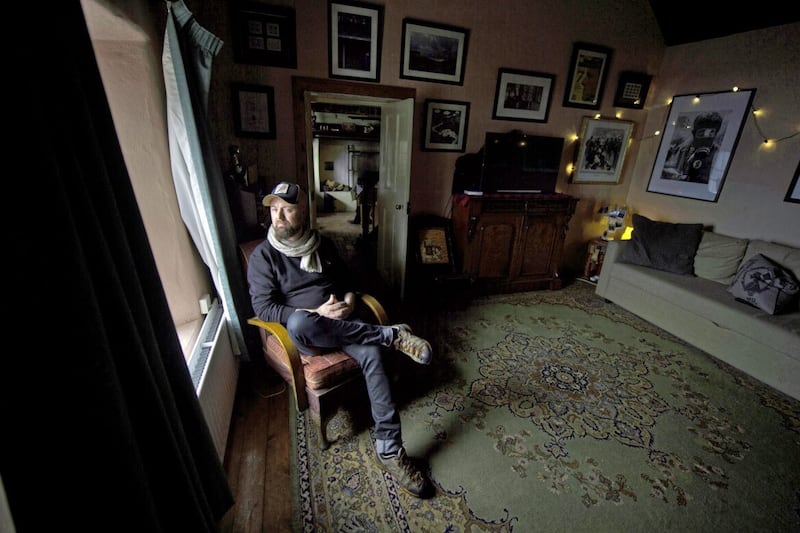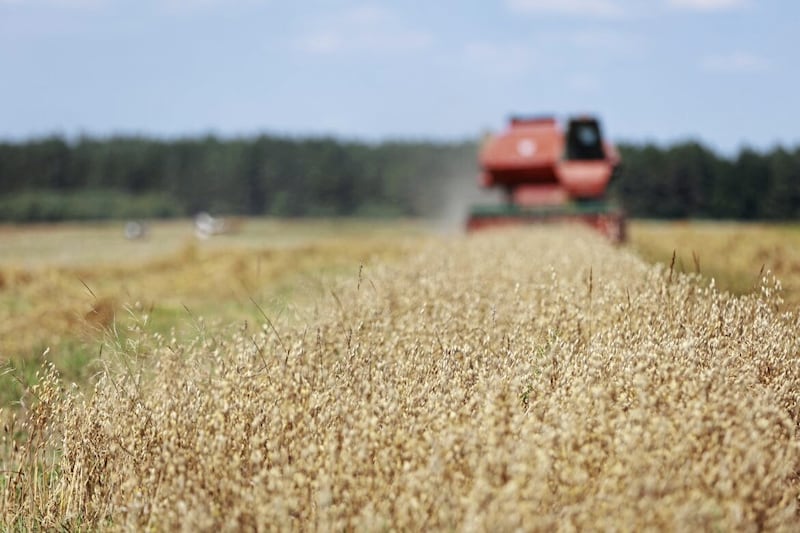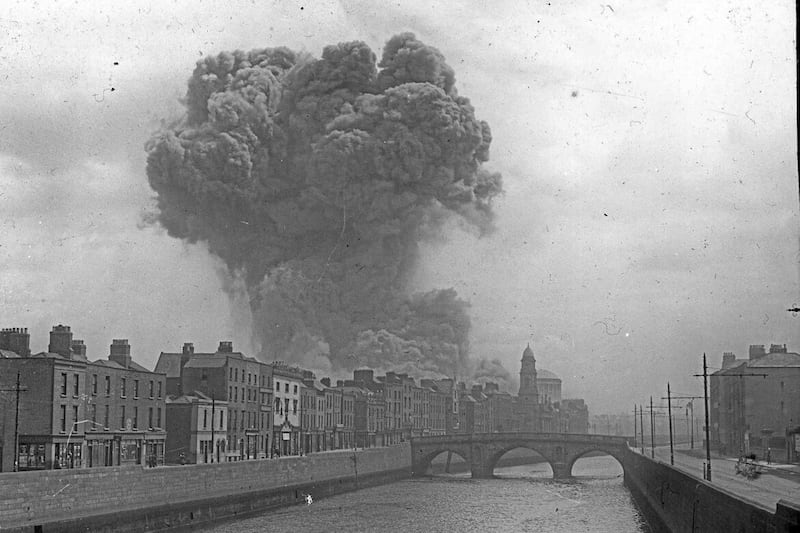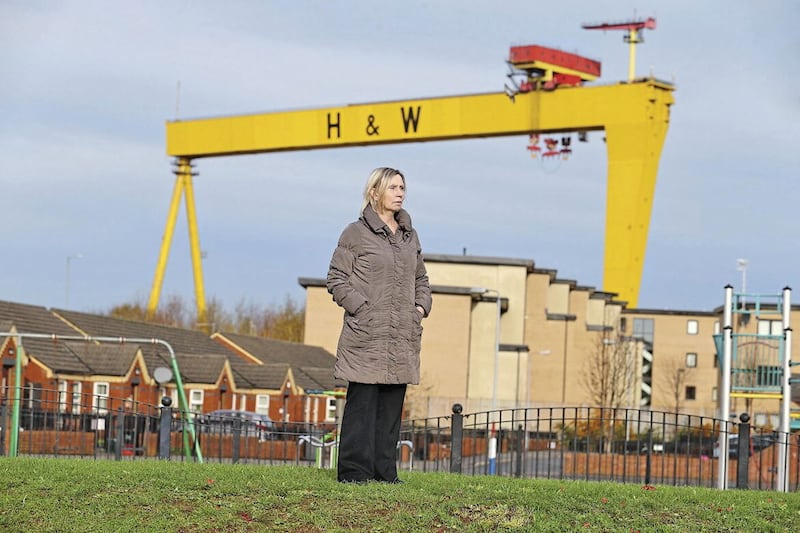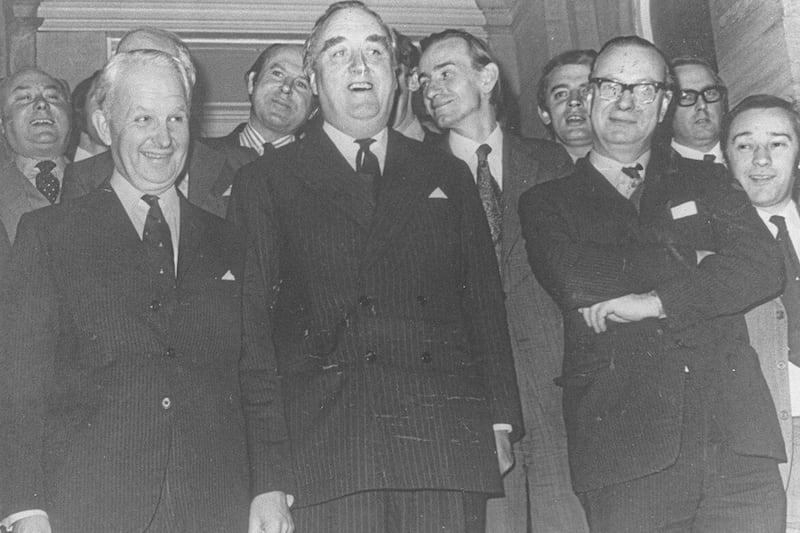DISCUSSING public art with artist Farhad O'Neill, back in the place he calls home after an extended trip to Canada to look after his late parents, is fascinating.
The outspoken guy behind modern religious work like the Cultúrlann's entrance canopy and a 70s style decorative door from the Europa Hotel knows what works.
"I was involved with any number of public monuments in Toronto. The best art comes after community consultation, I think. But there has to be the artist's independence too," explains the 54-year-old.
An example of a cultural statement O'Neill thinks works well is Antony Gormley's Angel of the North near Gateshead.
"I do like monumental pieces, although not always this big. There's a great quote from Alexander Pope, I think: 'A bird builds a nest/Man builds architecture. It's a way of saying 'We're here'."
And while unwilling to comment on Belfast's range of modern art, O'Neill admits to a penchant for John Kindness's Big Fish beside the Lagan – "Yes, I like that."
The 76 bronze bas-relief sculptures that make up O'Neill's important new exhibition at the Linen Hall Library - which opens next Wednesday, February 1 - are currently stacked in white cardboard boxes in a corridor outside his studio.
They're small scale, and seem almost private. "Yes, when you work on reliefs small scale, they are. They remind me of the triptychs that could be held in the hand. It is a personal exhibition," the artist tells me.
His workspace on the Falls Road – "It's a former old people's drop-in centre" - is behind the Cultúrlann.

A Life in Low Relief features O'Neill's series of bas-reliefs dating back over 20 years. They are circular, measure a few inches in diameter, and beautiful. Bas-reliefs involve a technique which emphasises the raised image, as on a coin or in the grand images round the Arc de Triomphe. Or on one of O'Neill's big standing stone works from the Millennium in Turf Lodge. You're getting the illusion of 3D in a 2D space.
But this sculptor's technique is special. He shows me Christ on the Cross from his Stations of the Cross, clearly a labour of love.
"I get a dish, put plaster in a plastic bag, then carve abstract shapes into it. I do this while meditating," O'Neill explains.
"I am devoted to Jesus and I don't know why so many people exclude the spiritual exercises of St Ignatius de Loyola. It took me 11 months to produce 14 reliefs."
He adds that it was demanding as well as spiritual work. "I felt pretty sick at the end of the day and would tape my fingers together."
A contrasting bronze circle takes Dante's famous lover, Beatrice, who appears in the Inferno and here is seen as part of a stormy semi-abstract scene. O Neill says: "This was shown at the Linen Hall Library in 2005 as part of an illustration of Dante's great poem and was facilitated by John Gray. I did this quickly and it was one of the most popular pieces."
The exhibition is a selling show and O'Neill says that a single piece from his religious sequence could work by itself: "It would be good in a church or in a house."
Everywhere, there is evidence of O'Neill's artistic skill. Mainly self-taught, he started painting as a teenager, was brought up in Canada and moved to Belfast in 1992. There is a touching work on his desk showing O'Neill's mother's face on one side of a sculpture, his face on the other. It's black, shiny and affecting. The artist reveals he may keep this one: "I don't think I am going to sell it, it's too personal."
Next to it is a superb white marble work, titled the Ship of Fools. It's Cubist in style, something Braque or Picasso might have appreciated. The joke comes from Plato, indicating that a ship with dysfunctional crew, like a country with dysfunctional government, can't steer well.
O'Neill says: "That could be scaled up to 20 or 30 feet tall and should be somewhere like the harbour in Titanic Quarter, or even in the back courtyard of the City Hall. Belfast is a shipbuilding town with a sense of humour, so it would be perfect."
Since his return, O'Neill has made overtures to various people who might be interested in housing some of his work. "I've tried Translink as they might need a sculpture for their new Grand Central Station, and have approached developers."
When O'Neill was living in Toronto, he gained a prestigious job at St Michael's Cathedral as religious sculptor. This was the first time one had been appointed and he produced some magisterial Marian doors for the cathedral, referencing the Rosary.
"I'm proud of those, they should be there for 1,000 years," he says.
"It was an honour to be asked and to be able to express faith and the history of Irish people which is relevant."
Many Irish families emigrated to Canada during the famine. O'Neill also produced the Corpus et Spiritus.
Yet although there was much to enjoy in Canadian cultural life, society wasn't totally liberal. O'Neill notes the presence of prejudice there: "Belfast is the right size of city and it's affordable here. It's great to be back in my family home in the community, where people from this centre are now major leaders in the arts scene. In Canada, everything was happening and nothing was happening. There are certain hoops I don't fit into."
O'Neill admits in some ways it was a relief to leave: "Everything was political, it was good to come back here after the Trump-y thing. The intolerance was affecting my reputation as an Irish artist.
"There was an anti-Catholic, anti-Irish, racist feeling. You have to remember in Toronto in the 1840s, Catholics were actually beaten."
However, O'Neill's work remains a joy and he has found the right community. The creative process is, he says, complex like life, containing faith, emotion, sex and joy. Unsurprisingly, Rodin is one of O'Neill's sculptor heroes: "He achieved everything it was possible to do."
Also in the studio is a series of turf sculptures depicting Ireland's legendary past. The local material is a rich dark natural shade, appropriate for Cuchulain's death and the other mythic moments.
Thought-provoking paintings and drawings fill the corridor on the way out. But can art transform people's mindsets and heal prejudice? "No, activism is better. There's this upper middle class attitude of, 'I am painting this, and it will change the world'. It won't; voting is better."
:: A Life in Low Relief opens at the Linen Hall Library in Belfast on Wednesday February 1. Farhad O'Neill's free talk is on February 3 at 1pm; register at farhadsculpture.com/bas-reliefs



